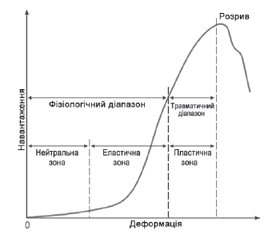Журнал «Травма» Том 24, №3, 2023
Вернуться к номеру
Значення заднього лігаментозного комплексу при травматичному ушкодженні ділянки грудопоперекового переходу Частина 1. Морфологія та біомеханіка
Авторы: Нехлопочин О.С., Вербов В.В., Чешук Є.В., Вороді М.В.
ДУ «Інститут нейрохірургії ім. акад. А.П. Ромоданова НАМН України», м. Київ, Україна
Рубрики: Травматология и ортопедия
Разделы: Справочник специалиста
Версия для печати
Відповідно до сучасних уявлень одним з базових критеріїв стабільності хребетно-рухового сегмента при травматичному його ушкодженні є цілісність заднього лігаментозного комплексу (ЗЛК). Щодо ділянки грудопоперекового переходу (ГПП) як зони, найвразливішої для травматичних ушкоджень, при визначенні тактики терапії використовують Thoracolumbar Injury Classification and Severity Score і клінічно орієнтовану класифікацію AOSpine Thoracolumbar Spine Injury Classification System, у якій стан ЗЛК є одним із трьох ключових параметрів. Уперше термін ЗЛК запропонував у 1963 р. F.W. Holdsworth. Однак лише широке впровадження в клінічну практику магнітно-резонансної томографії дало змогу повною мірою розкрити інформативність зазначеного параметра. До складу комплексу входять надостьова, міжостьова і жовта зв’язки і капсула фасеткових суглобів. Мета огляду: упорядкувати сучасні уявлення щодо морфології, біомеханічних особливостей, клінічної значущості й діагностичних можливостей виявлення ушкоджень ЗЛК при травматичних ушкодженнях ділянки ГПП. У першій частині детально розглянуто морфологічні й біомеханічні особливості ЗЛК зони ГПП. При описі морфології окремих зв’язок основну увагу приділено їхній протяжності, зонам фіксації та окремим шарам, якщо такі виділяють. Крім того, враховувалося взаємне анатомічне розташування структур, що розглядаються. Гістологічні особливості вказано лише в аспекті їхньої біомеханічної значущості. Аналіз даних літератури дав змогу упорядкувати дані, що характеризують біомеханічні параметри кожної зв’язки ЗЛК для кожного хребетно-рухового сегмента ділянки, що розглядається. Ураховували показники жорсткості, зусилля розриву, енергії руйнування, межі міцності й деформації, максимальної деформації та модуля пружності. Розглянуто особливості кривої «навантаження — деформація» зв’язкового апарату ділянки ГПП і методи розрахунку нелінійної зміни жорсткості кожної зв’язки ЗЛК у межах фізіологічних навантажень. Описано феномен переднавантаження і його клінічну значущість. Розглянуто деякі аспекти взаємодії елементів пасивної стабілізаційної системи при різних патернах навантаження. Наведені в першій частині огляду дані можуть бути корисними для загального розуміння принципів біомеханіки хребетно-рухового сегмента і можуть використовуватись при побудові високодеталізованих комп’ютерних моделей.
According to modern concepts, one of the basic criteria for the stability of the spinal motion segment in case of its traumatic damage is the integrity of the posterior ligamentous complex (PLC). Regarding the thoracolumbar junction (TLJ) as a zone that is most vulnerable to traumatic injuries, the Thoracolumbar Injury Classification and Severity Score and the clinically oriented AO Spine Thoracolumbar Spine Injury Classification System are used in determining therapeutic approaches in which the state of the thoracic spine is one of three key parameters. The term PLC was first proposed in 1963 by F.W. Holdsworth. However, only the widespread introduction of magnetic resonance imaging into clinical practice made it possible to fully reveal the informativeness of the specified parameter. The complex includes the interspinous, supraspinous ligaments, ligamentum flavum and facet joint capsule. The purpose of the review is to organize modern ideas about the morphology, biomechanical features, clinical significance, and diagnostic possibilities of detecting damage to the PLC in traumatic injuries of the TLJ area. In the first part, the morphological and biomechanical features of the PLC of the TLJ zone are considered in detail. When describing the morphology of some ligaments, the main attention is paid to their length, fixation zones, and certain layers, if such are distinguished. In addition, the relative anatomical location of the considered structures was taken into account. Histological features are indicated only in terms of their biomechanical significance. The analysis of literature data made it possible to organize the data characterizing the biomechanical parameters of each ligament of the PLC for each spinal motion segment of the area under consideration. Stiffness indicators, breaking force, fracture energy, strength and deformation limits, maximum deformation and elastic modulus were taken into account. The features of the load-deformation curve of the TLJ ligaments and methods of calculating the nonlinear change in the stiffness of each ligament of the PLC within the limits of physiological loads are considered. The phenomenon of preload and its clinical significance are described. Some aspects of the interaction between the elements of the passive stabilization system under different load patterns are considered. The data presented in the first part of the review can be useful for a general understanding of the principles of biomechanics of the spinal motion segment and may be used in the construction of highly detailed computer models.
задній лігаментозний комплекс; грудопоперековий перехід; хребетно-руховий сегмент; морфологія; біомеханіка
posterior ligamentous complex; thoracolumbar junction; spinal motion segment; morphology; biomechanics

